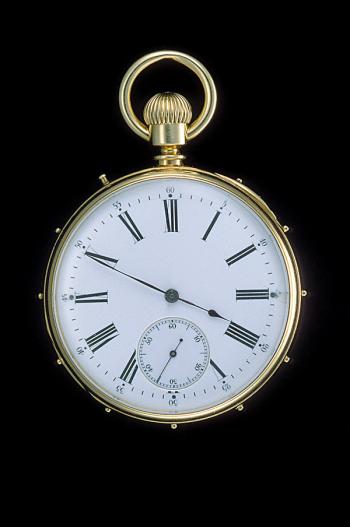
What we know about blue light science and research in 2020
Shelby Temple, PhD, a visual neuroscientist, has spent the last two decades investigating the way the visual system detects and responds to light.
He began his research looking at polarized light detection in cuttlefish, a species whose vision does not identify color wavelengths of light but whose vision depends on detecting different polarizations of light. In the process of his research, he looked at polarization detection in humans. He learned that the mechanism by which humans can perceive polarized light is caused by molecular components in the retina that protect the eye from high-energy blue wavelength light. He has devoted his career to researching and educating the public about blue light science and the impact it can have on ocular health.
Do digital devices really put our eyes at risk? This is the question that Dr. Temple is most commonly asked when he speaks with eyecare professionals.
Related:
“On their own, individual devices probably aren’t putting out high enough amounts of energy that they are going to cause immediate damage,” Dr. Temple says. “But in the long-term, that’s more interesting. It’s not about the intensity; it’s about the exposure.”
Length of time of the computer, dilation of the pupil during device use-these factors could make a difference over a lifetime of blue light exposure.
Animal model research
One thing Dr. Temple feels strongly about is that the existing blue light research done on animal models should not be disregarded.1-5 Animal studies have long been used to explore how the human body works and are important when investigating long-term, chronic conditions like retinal damage from blue light exposure where it would be impossible to follow candidates for 65+ years and control for environment and medical history.
“This type of study is not feasible; it’s never going to happen,” he says. “What we can do is look at animal studies and epidemiological studies in humans, and all of these studies show without question that blue light can damage the retina.”
Related:
Dr. Temple uses an illuminating analogy for the acceptance of animal and epidemiological research in understanding how environmental exposures can affect human health.
“Everyone today accepts that smoking causes lung cancer, but before 1964 it was up in the air,” he says.6 “The evidence that was put forward by the surgeon general to link smoking to lung cancer then is the same type of evidence we have about blue light damage today. There has never been a double-blind placebo-controlled study in humans that proved smoking causes cancer, nor should there be. We will never have a placebo-controlled study in humans that proves blue light causes macular degeneration.”
Dr. Temple encourages optometrists not to wait for research that is not feasible to make changes to how they educate patients about risks for macular disease.
Related:
How to educate patients
An estimated 14 to 24 percent of people have age-related macular degeneration by age 65, with that number jumping to 33 percent after age 75.7 With Americans living longer, eyecare providers’ focus is to delay the onset of this condition.
What can ODs recommend to patients at every exam to help protect long-term ocular health?
• Educate patients about the dangers. Every time you go outside, you expose yourself to ultraviolet (UV) and high-energy blue light. Daily protection from childhood is essential to long-term ocular health
• Prescribe quality sunglasses for every patient
• Educate the importance of a balanced diet. Dark leafy greens and brightly colored fruits and vegetables are full of carotenoids which support macular pigmentation. These macular pigments block up to 80 percent of blue light from the retina.8
Related:
The International Organization for Standardization (ISO) has established standards for UV and blue light protection in eyewear.9 Using data from over 50 years of research, ISO recommends protection for specific wavelengths of high-energy blue light in the ranges of 380 to 455 nm to lower the risk of retinal damage.
Not all blue light is dangerous, and in fact certain wavelengths of blue light are essential to regulating the sleep/wake cycle. The correct eyewear will not block the 480 nm range that is important to melanopsin function for circadian rhythm regulation.
Related:
The specific wavelength of blue light matters, according to Dr. Temple.
“Light with 433 nm wavelength is 20 times more damaging to retinal cells than 500 nm blue wavelength light,” he says.
Blue light science to know
• Sunlight exposure, antioxidants, and age-related macular degeneration10
This study showed that people with a poor diet and low levels of carotenoid intake had a much higher risk of developing age-related macular degeneration (AMD).
Dr. Shelby considers this study fundamental in linking how our own natural, internal protection against blue light (macular pigmentation) is essential to protecting against AMD.
Related:
• Elevated fundus autofluorescence in monkeys deficient in lutein, zeaxanthin, and omega fatty acids11
In this study macaque monkeys were divided into two groups: one group was starved of carotenoids, and another group had a normal diet. These monkeys were followed over 28 years, and their retinas were assessed regularly for the presence of drusen.
Results showed that the segment of monkeys whose diet was deprived of carotenoids had much lower levels of macular pigmentation, and they developed AMD at half the age of the monkeys with normal diets and normal macular pigmentation.
Read more by Dr. Lyerly:
• Benedictine monastery on the Island of Rab hides the mystery of sunlight influence on development of macular degeneration (AMD). Is a harmful sunlight risk factor or cause of macular degeneration?12
This study looked at 15 Benedictine sisters who lived a secluded lifestyle in a very dark monastery. Despite the age of these monks (average in their 60s), they had the retinas of much younger patients, except for two sisters with evidence of macular degeneration. These were the only two sisters who were responsible for gardening, so they spent significant time outside.
Because of the very unusual conditions in which the sisters had a controlled diet and daily routine, it is the closest to a placebo-controlled study in humans that proves sunlight exposure is a harmful risk factor in developing macular degeneration.
Read more by Dr. Lyerly:
References:
1. Nakamura M, Yako T, Kuse Y, Inoue Y, Nishinaka A, Nakamura S, Shimazawa M, Hara H. Exposure to excessive blue LED light damages retinal pigment epithelium and photoreceptors of pigmented mice. Exp Eye Res. 2018 Dec;177:1-11.
2. Krigel A, Berdugo M, Picard E, Levy-Boukris R, Jaadane I, Jonet L, Dernigoghossian M, Andrieu-Soler C, Torriglia A, Behar-Cohen F. Light-induced retinal damage using different light sources, protocols and rat strains reveals LED phototoxicity. Neuroscience. 2016 Dec 17;339:296-307.
3. Song JA, Choi CY. Effects of blue light spectra on retinal stress and damage in goldfish (Carassius auratus). Fish Physiol Biochem. 2019 Feb;45(1):391-400.
4. Narimatsu T, Ozawa Y, Miyake S, Kubota S, Yuki K, Nagai N, Tsubota K. Biological effects of blocking blue and other visible light on the mouse retina. Clin Exp Ophthalmol. 2014 Aug;42(6):555-63.
5. Wu J, Seregard S, Spångberg B, Oskarsson M, Chen E. Blue light induced apoptosis in rat retina. Eye (Lond). 1999 Aug;13 ( Pt 4):577-83.
6. Auerbach O, Stout AP, Hannond EC, Garfinkel L. The role of smoking in the development of lung cancer. Proc Natl Cancer Conf. 1964;5:497-501.
7. American Federation for Aging Research. Age-related Macular Degeneration. Available at: https://www.afar.org/infoaging/disease-center/age-related-macular-degeneration/. Accessed 2/26/20.
8. El-Sayed M. Abdel-Aal, Humayoun Akhtar, Khalid Zaheer, and Rashida Ali. Dietary sources of lutein and zeaxanthin carotenoids and their role in eye health. Nutrients. 2013 Apr; 5(4): 1169–1185.
9. International Organization for Standardization Online Browsing Platform. Short wavelength visible solar radiation and the eye. Available at: https://www.iso.org/obp/ui/#iso:std:iso:tr:20772:ed-1:v1:en. Accessed 2/26/20.
10. Fletcher AE, Bentham GC, Agnew M, Young IS, Augood C, Chakravarthy U, de Jong PT, Rahu M, Seland J, Soubrane G, Tomazzoli L, Topouzis F, Vingerling JR, Vioque J. Sunlight exposure, antioxidants, and age-related macular degeneration. Arch Ophthalmol. 2008 Oct;126(10):1396-403.
11. McGill TJ, Renner LM, Neuringer M. Elevated Fundus Autofluorescence in Monkeys Deficient in Lutein, Zeaxanthin, and Omega-3 Fatty Acids. Invest Ophthalmol Vis Sci. 2016 Mar;57(3):1361-9.
12. VojnikoviÄ B, VojnikoviÄ D. Benedictine monastery on the Island of Rab hides the mystery of sunlight influence on development of macular degeneration (AMD). Is a harmful sunlight, risk factor or cause of macular degeneration? Coll Antropol. 2010 Apr;34 Suppl 2:5-8.
Newsletter
Want more insights like this? Subscribe to Optometry Times and get clinical pearls and practice tips delivered straight to your inbox.


















































.png)


